Decorative lighting lamps
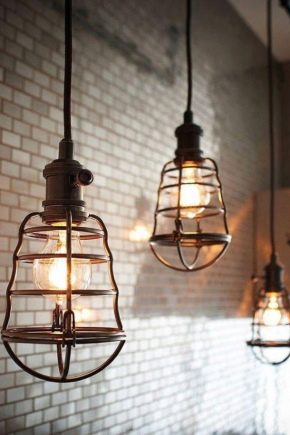
In the modern world, stylish image, taste, elegance and functionality are of paramount importance in the interior and space. This cannot be achieved without the latest technologies that can bring comfort and convenience to our home. The main element in the design of any room is lighting and the right choice of lamp, which will add a special atmosphere and comfort to the room.
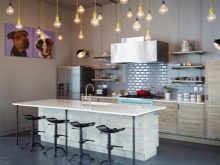
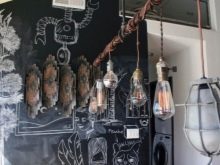

Varieties and characteristics
It is known that light is vital for everyone, without exception, because it is thanks to it and solar energy that all living organisms develop on our planet. Mankind has passed a long way from kerosene lamps to modern electric ones. During this period, light sources have acquired many varieties:
- conventional electric incandescent lamp with a metal spiral inside the bulb (known from Soviet history as the "Ilyich bulb"), invented and patented by the American Thomas Edison at the end of the 19th century, is the most widely used type. The light from it resembles warm sunlight due to the predominance of yellow tones of the glow spectrum. It is very easy to use, but it has a very short service life and consumes a lot of energy, it is also very sensitive to voltage drops, therefore it is practically not used in design, but it is widely used in general lighting, being the cheapest option for the home;
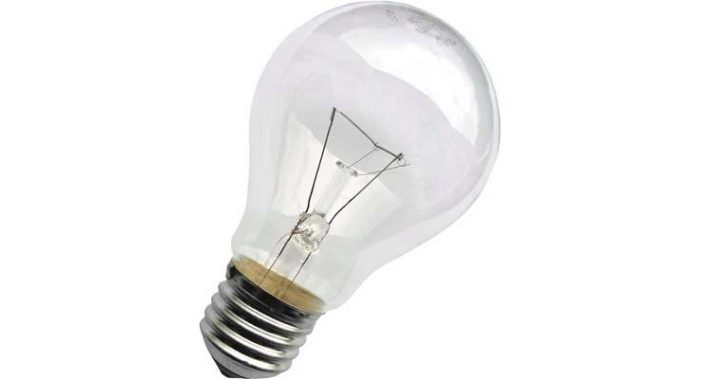
- energy saving (most often luminescent)... Such sources have become very popular due to their economy, because they can significantly reduce energy costs, while having a high light output coefficient. With indisputable advantages, one cannot but note some disadvantages: firstly, these are mercury vapor contained in the flask and ensuring the regular operation of such lamps. Secondly, the ultraviolet light that is emitted during the operation of this lamp is harmful to our eyesight. Recently, however, this problem has been reduced by a special coating applied to the inside of the bulb and absorbing most of the harmful radiation. There is a wide variety of these types of sources for decorative use;
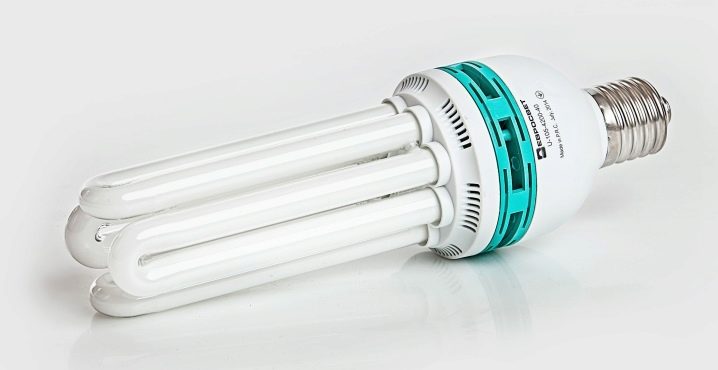
- halogen lamps are modernized incandescent lamps, in which the coil is heated to higher temperatures, which allows you to get more light radiation. Its service life is four times longer than a conventional incandescent lamp and is about 4 thousand hours. Due to their small size, they are often used as spotlights for stretch ceilings and furniture;
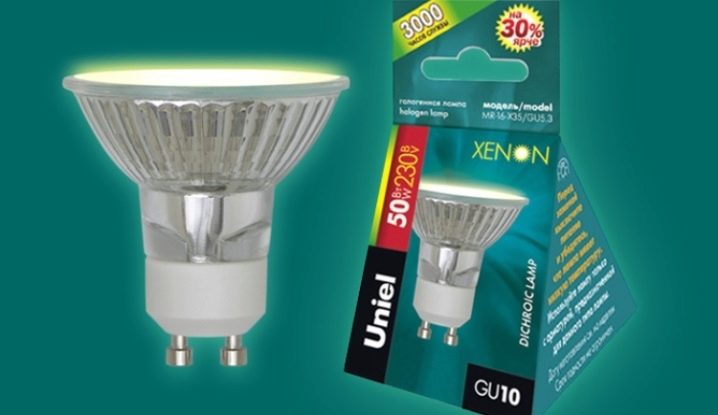
- LED also called energy saving, but surpass them in their performance. The service life of these devices is almost 3 times longer and reaches one hundred thousand hours with almost one hundred percent light output. They are also very safe, are the most environmentally friendly lighting devices, do not emit ultraviolet light and do not heat up during operation. The scope of their application has significantly expanded since its inception: from indicator lamps in electronic structures to lighting devices in cars and to full-fledged sources of decorative light in the interior.
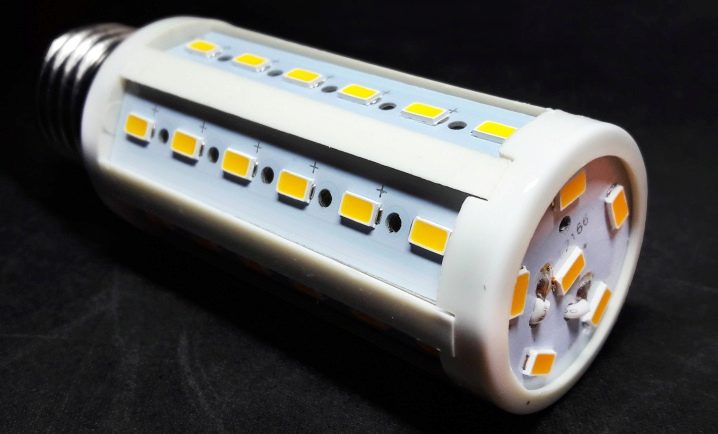
Each of the presented types of lamps may have special characteristics.For example, electric lamps with motion sensors, which provide the switching on and off of light sources in a certain period of time (with the onset of darkness or in an unlit room) and with moving objects in the sensor's range. When the recording of the movement of people, cars and other objects in this area is stopped, the light turns off. Most often, such electrical appliances are installed in street lighting, in the entrances of houses, in industrial enterprises.
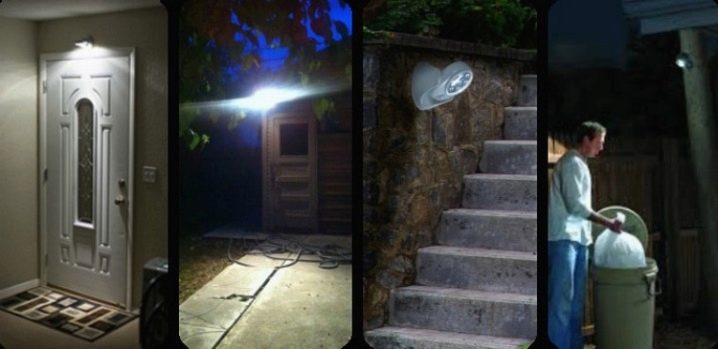
Such sensors are suitable for almost all types of lamps, but the most economical ones are, of course, LED ones. The variety of sensors even allows you to control the light intensity - these are dimmable lamps, with the help of which the power of the light source is regulated thanks to a specially built-in device (dimmer). The dimmer allows you to change the luminous flux from 10 to 100%. Such original appliances help to ensure comfort and give an incredible atmosphere to the entire interior.
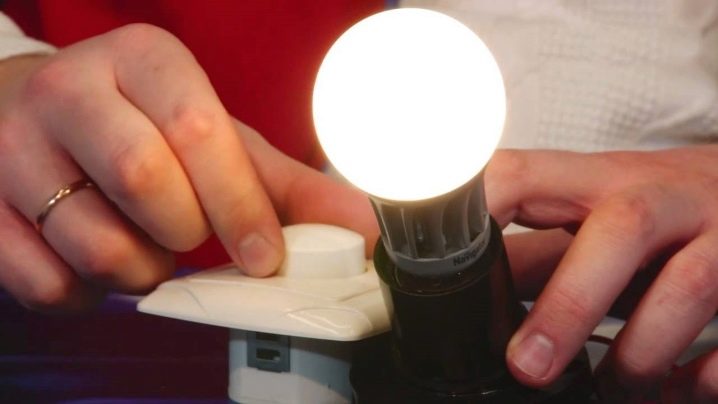
If for some reason it is impossible to connect to the local power supply, a wireless LED lamp with batteries will always help out.
Such lamps have become very popular all over the world due to their massive use in all conditions and situations. There are also special furniture, wall, pendant lights on batteries that work for a long time, decorating and illuminating your space.
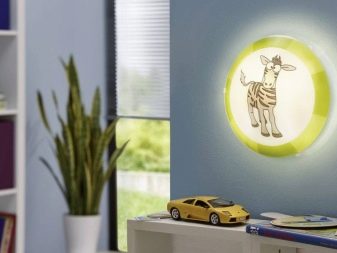
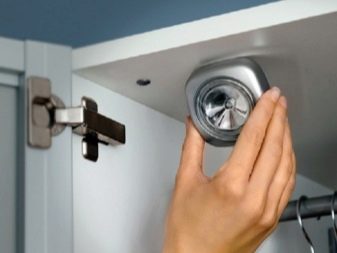
How to choose?
When choosing a lamp or chandelier, it is necessary to focus on which lamps will be compatible with them. There are differences in shape, size, power and base, through which the lamp source is inserted into the cartridge and an electric current is supplied to it. Usually the base material is metal, ceramic or plastic.
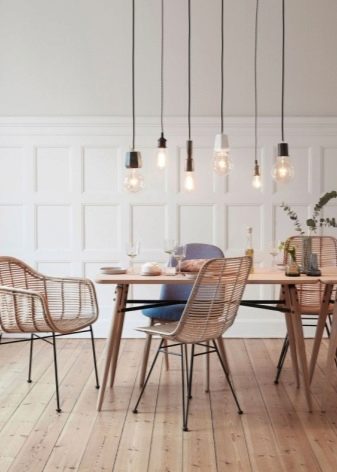
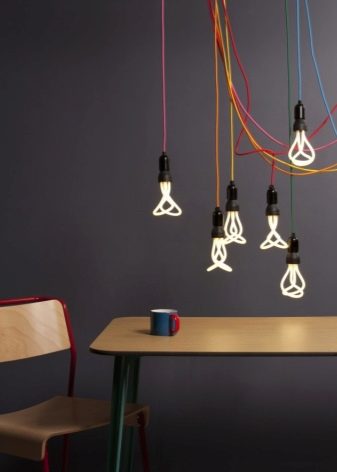
Each lighting source contains from one to several cartridges with a fastening element adapted specifically for this model.
Types of plinths
In electrics, there are many samples and modifications of plinths. In everyday life, we usually deal with two main groups: threaded (which happens more often) and pin.
Threaded has a screw connection with the chuck and is marked with the Latin letter E. This type is the most popular in everyday life. The following number indicates the size of the cap (thread diameter). Most often, lamps for an apartment have two connection parameters - E27 (the most famous, which is used not only in incandescent lamps, but also in energy-saving forms) and E14 - a variant of E27, but with a smaller diameter, called "minion". There are different shapes: ball, mirror, "pear", "drop", "candle", "mushroom". For more powerful lamps, for example, when lighting streets (in floodlights, street lamps), industrial enterprises, shopping centers, the E40 base ("goliath") is used.
Other versions of screw bases are presented in the table: (see table)

In some countries, such as Canada and the USA, due to the 110 V mains voltage, the parameters of the screw samples are not identical to the European standards. And, accordingly, the diameter is specific: E12, E17, E26, E39.
Pin base with two metal pins connecting the lamp to the socket. It is marked with the Latin letter G, and the number behind it indicates the distance between the contacts, for example, G4, G9. There are also additional designations (X, U, Y, Z) that subdivide these samples into modifications. We must not forget that these types are not interchangeable.
More details about pin types - in the table: (see table)
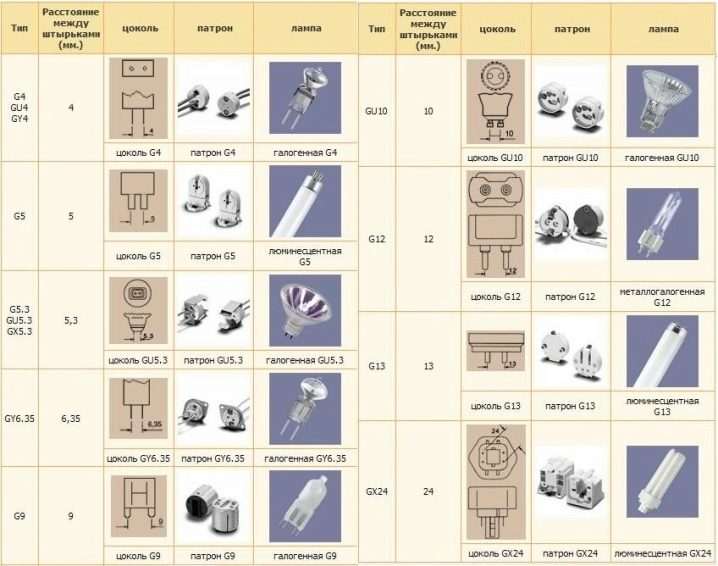
Type G4 is used in miniature halogen lamps with a voltage of 12/24 V. Designed for decoration and spotlights.
Sample G5 is operated in gas-discharge (luminescent) sources with a tubular flask 16 mm in diameter.
Special modifications GU5.3 are made for improved types of energy-saving LED lamps, which favorably illuminate ceilings, shop windows.
A special design - GU10 with thickened pins, which, for installation in the holder, is scrolled until the lamp is completely fixed in the lock. It is used in places where conventional lamps, if not properly secured, can fall out (for example, in suspended ceilings).
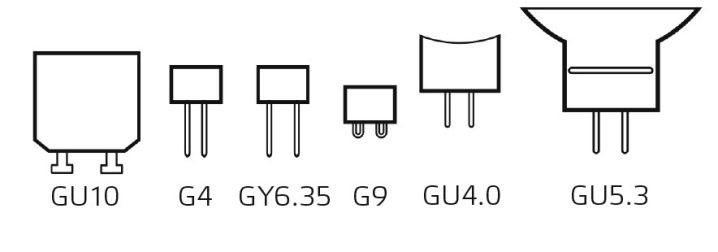
In addition to the above, there are quite rare samples of plinths:
- R - with a recessed contact (designed for high power, used in high-intensity devices and operating in alternating current networks);
- S - spotlights with double-sided contacts, which are installed like fuses (used for highlighting car interiors and license plates, when illuminating mirrors, equipment for scenes in theaters and concert halls, as well as in lighting devices of hotels, restaurants, bars);
- B - pin (bayonet, from the French word "bayonet") - have round pins, convenient for installation in the slots of the socket, which are scrolled, fixing the lamp. Designed for quick change of light bulbs. A subtype BA has been created, in which the contacts are asymmetrically located, which is why the lamp is fixed in the holder in a certain position, allowing perfect focusing of the luminous flux of car lanterns (and headlights for correcting low and high beams), lights of navigation vessels.
- F - single-pin, common in three subtypes: cylindrical, grooved on the surface, special in shape;
- P - focusing - are used in heavy-duty projectors and lanterns, indispensable in film projectors, navigation lights. A collecting lens is installed inside these plinths, directing the flow of light in a certain direction;
- T - telephone - intended for indicator lamps of consoles, electronic units, signaling devices in automatic dashboards.

Also, when choosing any light source, one must be guided not only by its aesthetic qualities, but also predict how well this option will look in the interior of a particular space.
Manufacturing material
Luminaires must meet all safety requirements and be made of refractory materials. Basically, these are porcelain, metal, crystal and heat-resistant plastic. Many designers like to use wood, fabric and even paper, but such products are fragile and not always reliable, they should be kept away from combustible objects.
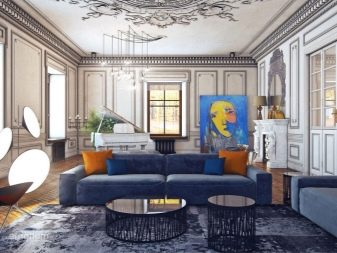

Plastic appliances are durable and safe enough, unpretentious in care and will delight you for a long time.

Glass and crystal lamps are in the greatest demand. They are very reliable, fire resistant and practical. In addition, they have high aesthetics and harmoniously fit into the design of the home.

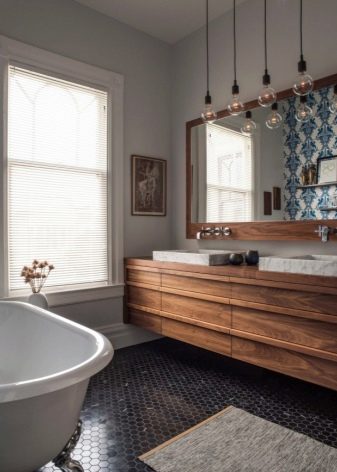
Glass types
Glass is one of the widely used materials for lighting fixtures. Currently, more than five hundred of its types are known for the manufacture of lamps. Here is some of them:
- clear glass perfectly transmits light, is used in various shades and reflectors;
- frosted glass allows you to get soft light without bright glare, which perfectly relaxes and calms the eyes and the nervous system;
- colored glass brings an element of joy, cheerfulness, good mood;
- mirror glass give the interior a mysterious and at the same time modern look.
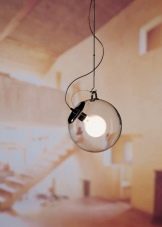

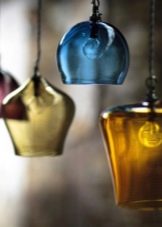
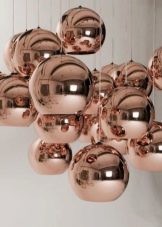
How to arrange?
In order not to be mistaken with the size of the lamp, it is necessary to clearly imagine the dimensions of the room. Light sources come in a variety of sizes, from miniature bulbs to large shades. Small luminaires fit perfectly into small low-ceilinged rooms and should be installed in sufficient quantity. You can apply various options that, attracting attention to themselves, distract it from some of the shortcomings of a small room.Bulky appliances are more suitable for spacious rooms with high ceilings.

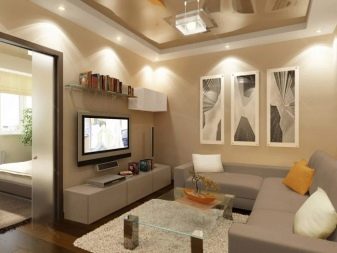
For walls, it is always very appropriate to adapt small sources like sconces. Mirrors will look perfect when framed by special devices with a targeted light source. The dining area in the kitchen will be functional with a sconce that has a straight downward luminous flux.
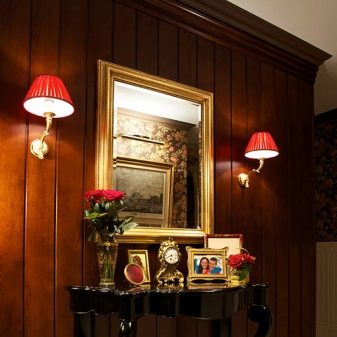

The accompanying illumination with shades in the form of a ball will create uniform illumination and give originality thanks to frosted or colored glass.
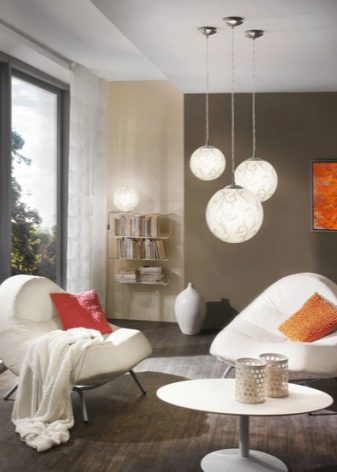
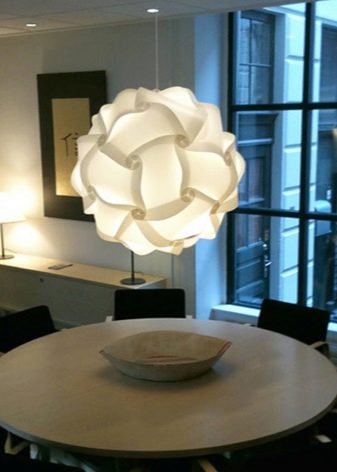
Any relaxation room needs quiet, subdued lighting for relaxation after a day of work. For this case, floor lamps are the best fit in the bedroom. Floor lamps of different sizes will look interesting. It is appropriate to place them in the darkened corners of the room to highlight these areas, due to which the room will visually look larger.
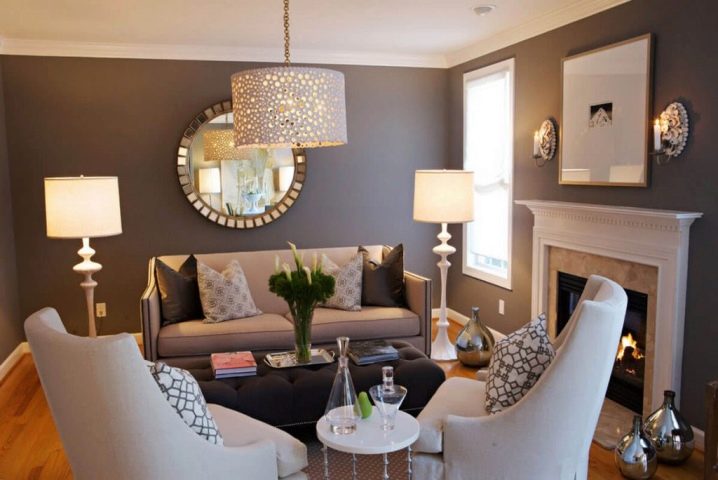
In a small room, you can try to install a floor lamp with a voluminous lampshade, which will create additional space and comfort.
In the bedroom, wall sconces by the bed or floor and table lamps are ideal. A dressing table with a mirror can be framed with a pair of electrical point appliances.
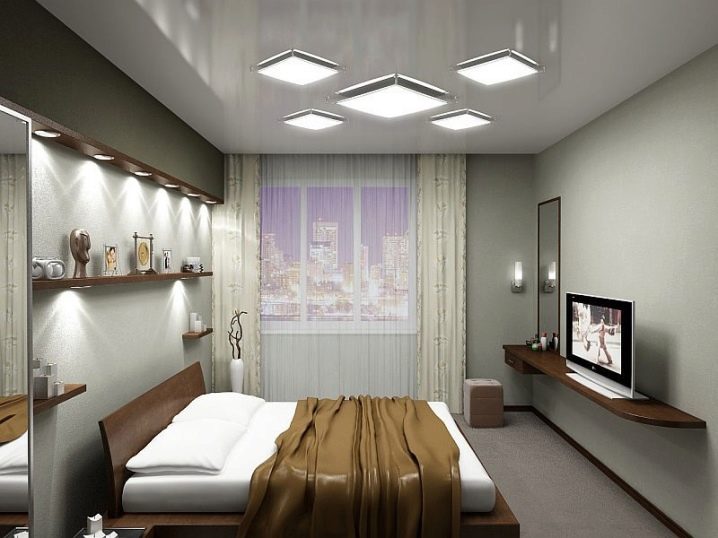
In the kitchen, you can combine several sources, each illuminating its own zone. For this, spotlights are the best way possible. An original plafond or lampshade will look good in the center.
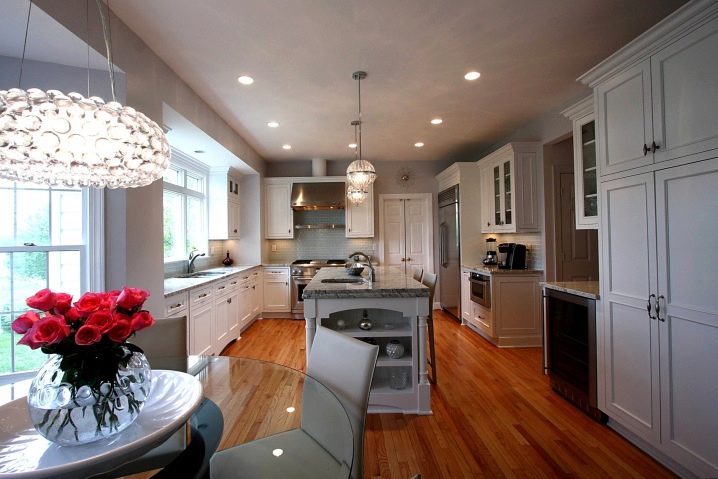
The living room should be light, bright and modern. Receptions and various family celebrations are held here. A large chandelier equipped with many bulbs will look very bold and aesthetically pleasing.
For zonal accents, it is appropriate to place spotlights.
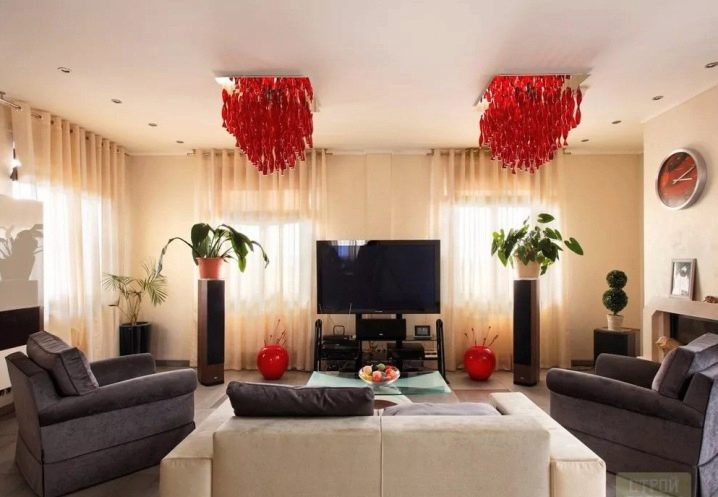
Colors
In a small room, functional areas can be distinguished not only with light, but with color:
- accentuate any object with a collected light beam;
- highlight separate spaces with colored lighting by placing several light bulbs under the ceiling, which should be colored, and concentrate them in one place;
- adapt different luminaires for their areas with mismatched lamp colors.
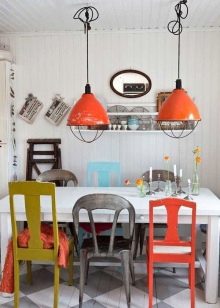
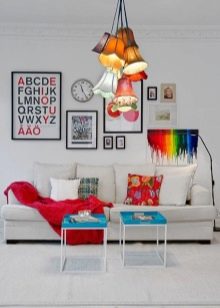
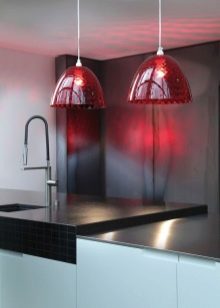
Lampshades can also be colored, but be sure to blend in with the overall environment. But for modern and high-tech styles, devices of clear colors are suitable - black and white.
Style variety
Any home should look aesthetically pleasing, fashionable and individual. This helps to create a positive mood, get satisfaction from home activities, makes rest in it pleasant and relaxing. Interior lamps will give your home a unique grace, charm, and make the room truly irresistible. Today, designers offer a huge selection of styles, colors, sizes, shapes that can completely transform your room, living room, bedroom. Whichever style you prefer, remember one thing, that the color scheme of the chandelier, shade or lampshade and their base should be the same.

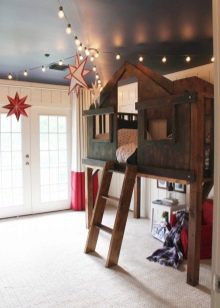
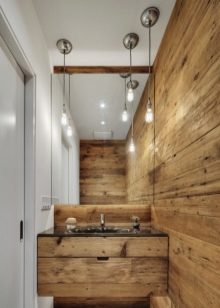
The studio apartment must be zoned and properly selected for each part its own version of the light lamp. In the kitchen-dining room, lampshades over the table with long decorative cords will come in handy.
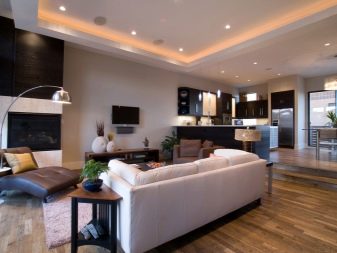
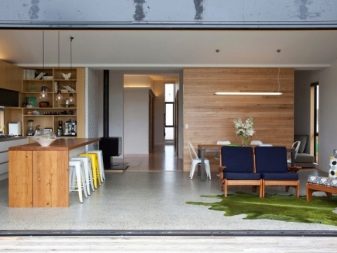
Classic style the design of the room is characterized by simplicity and grace. Lamps should be capacious, without unnecessary creativity, with a minimum of decorations. The main thing is to highlight the aesthetics and style of the interior.
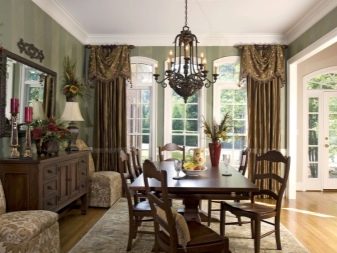
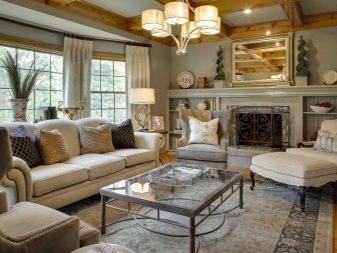
If you are a follower high-tech style, choose glass or plastic lamps with an abundance of shiny and metallic elements, ball and trapezoidal, which successfully emphasize the style. LED strips are especially relevant.
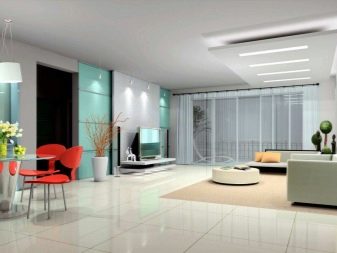
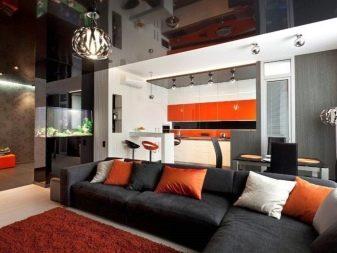
In the 20s - 30s of the last century was born art deco style, which has not lost its relevance almost a hundred years later. The main focus is the correct geometric shapes: spherical, cubic, polyhedra. Such lamps are sometimes compared to the ancient Egyptian pyramids.
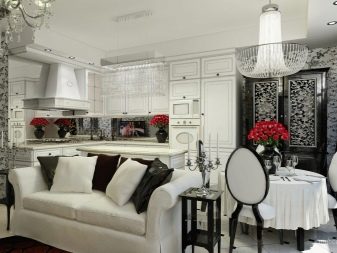

For connoisseurs of minimalism style color delights and pretentiousness are not acceptable.The predominant colors are moderate - gray, white. Simplicity, lightness and uncomplicated geometry are the main criteria for such lamps.
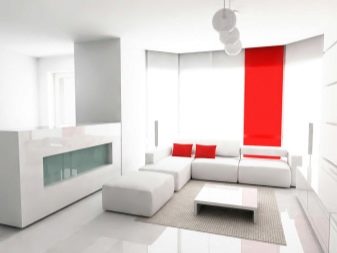
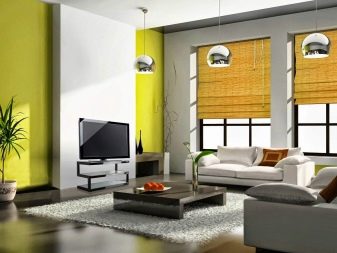
Rustic lovers lamps made of wood and fabric, which you can make with your own hands, will be to your taste. By painting them in rural motives, you can create additional coziness and comfort in any space.
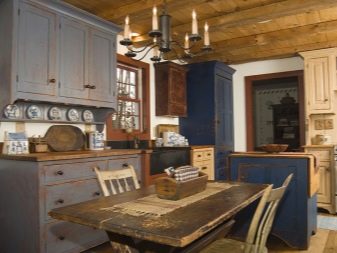
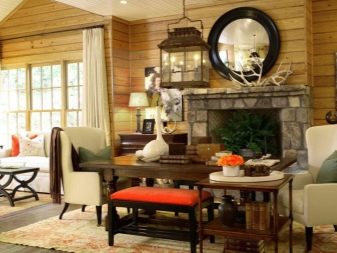
Bright and bold Art Nouveau style expensive materials are inherent: quartz, marble, leather, natural wood, glass, semi-precious stones and inlay. All options are predominantly handmade and not designed for mass production.
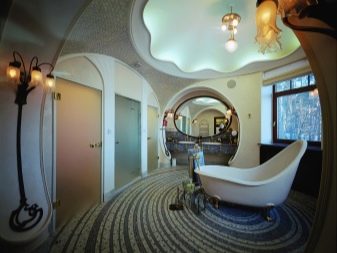
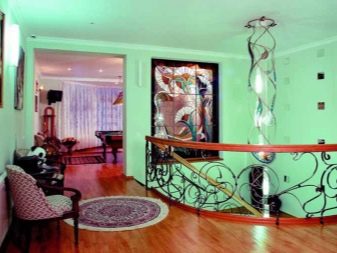
The original direction of bionics (from the word "bio") appeared in the 70s and 80s of the last century and expresses the unity with nature. Lamps in this style are of a bizarre shape: marine life, bouquets of leaves, flowers, silhouettes of animals, insects ...
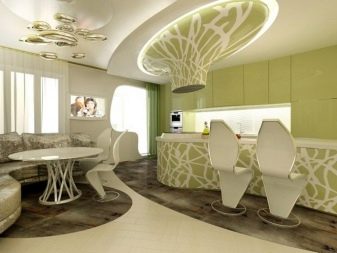
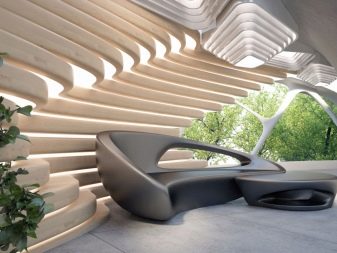
Deconstructivism style will be appreciated by fans of virtual reality and computer innovations. Neon lighting and LED strip create optical illusions, transfer imagination to another space.
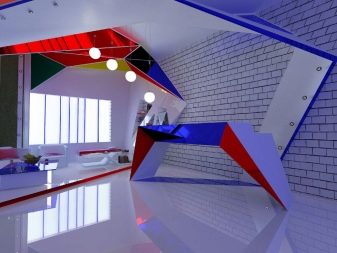
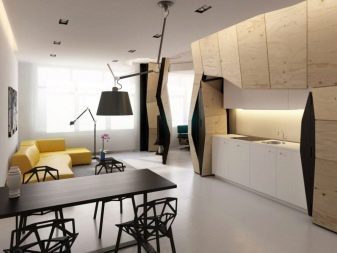
Style "irony", which appeared at the end of the past century, is characterized by lightness, humor, and carelessness. Modern options with spotlights will appeal to children and will perfectly fit into any nursery.
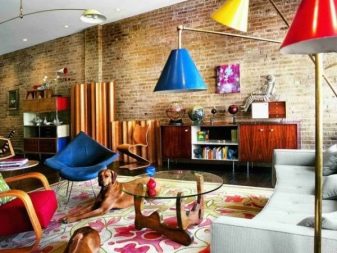
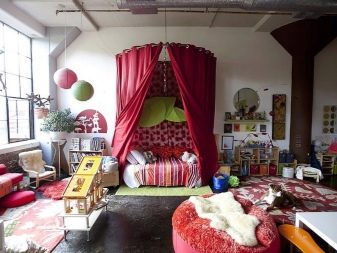
Eclectic style allows you to mix multiple styles and options, making a modern room even more daring, vibrant and individual. The main thing is not to overdo it and do everything with taste, trusting an experienced stylist if necessary. Often, many designers use the original version of one or more styles.
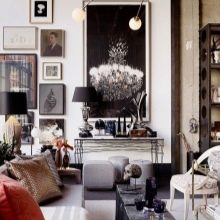
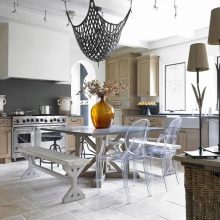
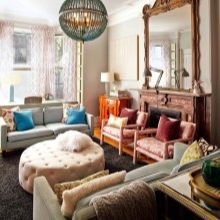
Clock on lamps is a new trend in time display. The peculiarity of these models is that the display, playback and timing is performed using gas-discharge lamps. These are retro indicators, produced in large quantities in the 70s-80s of the XX century, both Soviet-made and foreign. Used mainly in watches and measuring technology (easily recognizable vacuum tubes). Experts believe that these lamps are able to work for another 15-20 years without losing brightness.
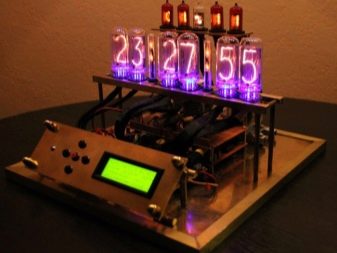

Such watches are distinguished by exceptional accuracy and clarity, you can program the date and time display mode, set a timer, two alarms at once. Such models are collected by ordinary radio amateurs, experimenting with sizes, shapes, designs.
You can buy them in specialized online stores.
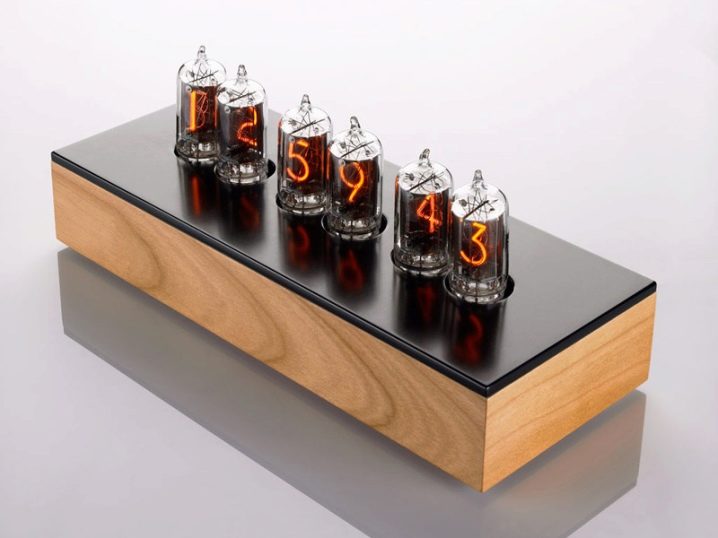













The comment was sent successfully.